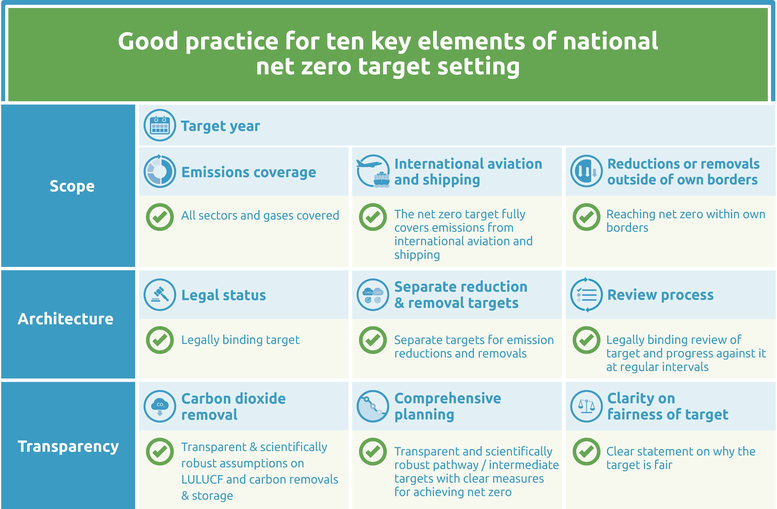Evaluation methodology for national net zero targets
Attachments
An increasing number of national net zero commitments worldwide
Since the adoption of the Paris Agreement and the release of the IPCC’s Special Report on Global Warming of 1.5°C, a growing number of countries have committed to net zero emissions targets. As of June 2021, 31 countries and the European Union have set such a target, either in law or in a policy document, and more than 100 countries have proposed or are considering one.
While it is encouraging that many governments are committing to net zero emissions, their targets vary in terms of timeframe, what GHG emissions and economic sectors are covered, whether the country intends to rely on removals and reductions outside its own borders, the target’s legal status, among other aspects. This has important implications for the strength of net zero targets, and whether they are likely to contribute sufficiently to reaching net zero emissions globally.
Ten-step net zero target evaluation methodology
Well-designed and ambitious net zero targets can guide the implementation of Paris-aligned actions in the short and medium term, setting countries on track to achieve net zero CO2 and GHG emissions globally by 2050 and 2070. At their worst, net zero targets can distract from the urgent need for deep emissions reductions, allowing governments to hide insufficient 2030 targets behind longer-term net zero aspirations.
There is a clear need for a nuanced assessment of whether or not national net zero targets are fit-for-purpose. To fill this gap, the Climate Action Tracker (CAT) has designed a blueprint for transparent, comprehensive and robust net zero targets, with ten key elements of good practice that governments setting net zero targets should consider.

Figure 1: Identified good practice for all ten key elements in the Climate Action Tracker’s evaluation methodology for countries’ net zero targets.
Upcoming assessments for 40 countries worldwide
From August 2021, the CAT will begin evaluating net zero targets for all 40 countries that are regularly covered in our country assessments, covering more than 81% of today’s global emissions. We intend to gradually complete all assessments towards COP26 by November 2021 and will continue to provide updates as governments announce, update, or concretise their net zero target commitments.
Stay informed
Subscribe to our newsletter